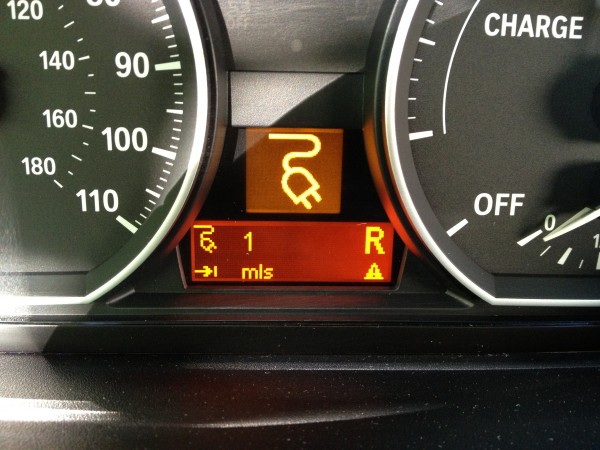8,888.8 Regenerate

Friday 18th May 2012
We’re at 8,888.8 miles… up and up they go. Whilst the majority of the miles I do are necessity miles there are of course a few (just a few!) fun miles thrown in too! Along with the 8,888.8 miles is car wash number 37.
We’ve been answering a lot of questions from people about regenerative breaking in the past few weeks. The high school students at Watchung Hills Regional High School were particularly keen. So, what is regenerative breaking and how helpful is it?
Michael prepared a graphic animation showing how the power flows – click play:
Power – We all know how this part works – you press the go pedal and you’re off! Power flows from the battery to the motor to push the wheels – the motor is connected to the wheels via a set of fixed gears.
Coast – On the ActiveE, the accelerator can be lifted off a little so that the car is neither accelerating nor decelerating – a bit like in an old fashioned car when you’re just holding speed on the flat. If you’ve never driven an electric car, it’s all the same so far. Except – and this is big – when you’re coasting in an EV you’re using absolutely no power at all. The motor and gears in an electric drivetrain are so light and free-spinning that they don’t really slow the car down at all. Even an old fashioned car coasting along in Neutral (N on the PRDNL (btw: That’s pronounced “Prundel” in old English)) might slow down faster because of the heavy gearbox. They can have as many as fourteen heavy gears spinning round – much more if your car is fitted with a Prundel.
Regenerate – This is where the old and the new separate. In an old-fashion car, when you lift off the accelerator the drag of the engine slows the car a bit – it’s called ‘Engine Braking’ – sounding like it’s a good or a useful thing – let’s just call it “Closed throttle pneumatic compression resistance” (Michael’s words!) or, “Waste” for short. None of the slowing down effect can ever be re-used, it just turns your hard-earned power into waste heat – you’ll never get it back again. In an EV, the motor switches over to being a generator. Actually, it doesn’t switch as electric motors – the type you’ll find in the ActiveE – are both motors and generators at the same time. If you give it power it spins, if you spin it, it makes power. By lifting your foot off the accelerator, the electronics in the car feeds the power being generated by the motor into the batteries.
But why does it slow down? – Well, we all understand that you need power to go forwards and pick up speed, so, the exact opposite is also true; you need speed to get power from the motor (now being a generator). The more speed you give up the more power you make, until you’ve used up all the speed and you’re stopped. Each time you accelerate you use power and each time you decelerate you get some back.
Some or all? – Well, when you slow down you get the power back but some of it is lost, a little in the electronics and some more in the batteries – they’re not perfect at saving all of the power. Also, as you drive you’re losing a bit of energy through the friction of the tyres on the road and the wind resistance the car faces.
How much is saved? – The amount of power lost in regenerative breaking seems to depend on a lot of factors but it could be as little as 5% to as much as 20%. But if you compare it to an old fashion car, one that loses 100% every time you slow down, it’s a lot better.
What’s one of the best things about regenerative breaking besides the easier driving? As you are not using the brakes there’s no brake dust on the wheels. No brake dust = lovely clean wheels.
Given a choice – I’ll take the car with regen every time.
The ActiveE after a long day of driving, today we managed to see just one mile left in the battery.


Comments